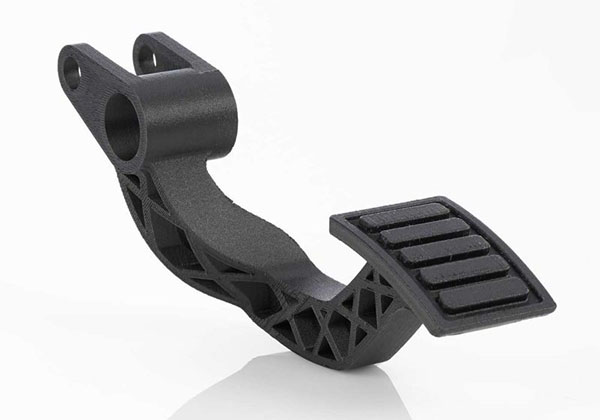Rapid prototyping is very helpful for designers. With the use of this, they can present their new ideas or concepts to the board members/ investors/ clients. With this, it is easy to understand the concepts and what is the purpose of the new design or concept. It helps them to understand and give approval for the new design and product.
Not only this, but with this visualization, the designers get help to get the feedback from the investors or clients on a ready basis on the actual physical product rather than any design or concept. And that’s why it is now used most and also has the best feedback of using it.

3d printing nylon brakes pedal*
The main purpose of rapid prototyping
The purpose of rapid prototyping is to get early feedback, refining the designs, and meet all the requirements of the users.
Mainly, the process of rapid prototyping includes the three steps which are prototyping, testing, and refining. In any company or business, the designers use this on different stages in order, to improve their solutions which are based on the prototyping results and the feedback which they get from the users or clients.
Under this, the designer uses the new ideas and checks them, and based on the feedback make changes until the required product is not ready or develops. They work until they get positive feedback from the client and make changes with their new ideas and designs.
Advantages and disadvantages of the rapid prototyping to use it
As every system or software has some pros and cons same as the rapid prototyping has some advantages and disadvantages to use it. Here are some of the given below for a better understanding of the prototyping and use of this. Let’s see them:
Advantages of rapid prototyping:
When you are thinking to use Rapid prototyping you will get lots of advantages. Some of them are mentioned below:
- When you use it then it will reduce the time of design and development.
- The use of this one can reduce the cost of overall development.
- It is allowing functionality testing.
- This can evaluate human factors and ergonomics.
- This improved and increased user involvement.
- With the help of this, the elimination of risk happens.
Disadvantages of rapid prototyping:
As this system has the advantages same as it also has disadvantages of using prototyping, such as:
- It needs the labor who is skilled in using this.
- It will add some initial cost.
- Sometimes this has a lack of accuracy.
- With this system, one can use limited materials.
- Sometimes the material properties such as the surface finish and strength do not match.
- Not all prototyping are economical some of them are expensive.
- It also seems that end users are confused to use this or the developer misunderstands the user objectives.
All these are the advantages & disadvantages of rapid prototyping, so when the designers use this in their work then they know about it before using it and this helps them while doing the work.
